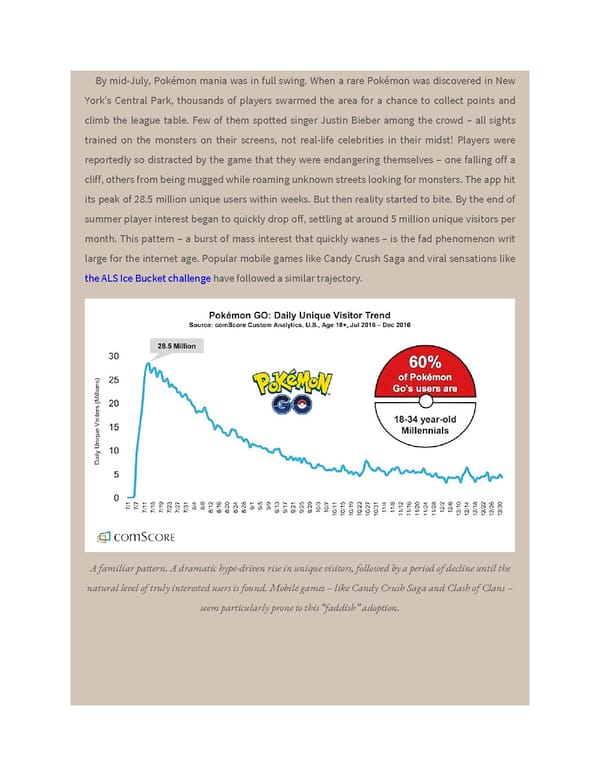By mid-July, Pokémon mania was in full swing. When a rare Pokémon was discovered in New York’s Central Park, thousands of players swarmed the area for a chance to collect points and climb the league table. Few of them spotted singer Justin Bieber among the crowd – all sights trained on the monsters on their screens, not real-life celebrities in their midst! Players were reportedly so distracted by the game that they were endangering themselves – one falling off a cliff, others from being mugged while roaming unknown streets looking for monsters. The app hit its peak of 28.5 million unique users within weeks. But then reality started to bite. By the end of summer player interest began to quickly drop off, settling at around 5 million unique visitors per month. This pattern – a burst of mass interest that quickly wanes – is the fad phenomenon writ large for the internet age. Popular mobile games like Candy Crush Saga and viral sensations like the ALS Ice Bucket challenge have followed a similar trajectory. A familiar pattern. A dramatic hype-driven rise in unique visitors, followed by a period of decline until the natural level of truly interested users is found. Mobile games – like Candy Crush Saga and Clash of Clans – seem particularly prone to this “faddish” adoption.
 Ogilvy on Advertising in the Digital Age Page 278 Page 280
Ogilvy on Advertising in the Digital Age Page 278 Page 280